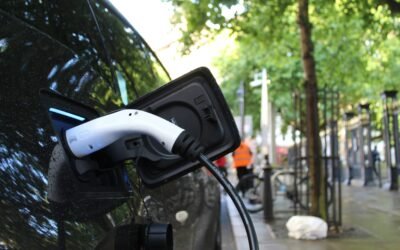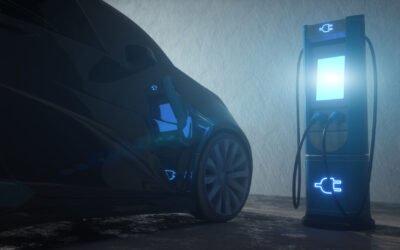- The automotive industry is undergoing a significant transformation globally, specifically in advanced economies.
- Fast charging offers speed and convenience but comes with cost, battery, grid, and sustainability considerations.
- Slow charging is cost-effective and gentle on batteries but may not suit users with tight schedules and long trips.
The automotive industry is undergoing a significant transformation globally, specifically in advanced economies. Major automobile OEMs are introducing electric vehicle models alongside internal combustion engine vehicle models as climate concerns mount. Charging infrastructure is crucial for EV adoption, easing range anxiety, boosting confidence, and speeding up sustainability efforts. This article compares fast and slow charging technology for EVs, analyzing their pros, cons, and impacts on factors like charging speed, infrastructure, battery health, convenience, and EV adoption.
Both EV and EV Charger OEMs, are heavily investing in high-power charging infrastructure to combat range anxiety and promote EV adoption. The increasing capacity of fast chargers, exceeding 350 kW, demonstrates this commitment. Figure 1 showcases industry leaders advancing this transformation, facilitating a more efficient EV integration.

Figure 1: Industry Leaders’ Fast Chargers.
Source: PTR Inc.
Understanding Fast Charging and Slow Charging
Fast and slow charging in the EV context involves different approaches to recharging batteries at varying speeds and power levels. Fast charging employs high-power stations, rapidly replenishing an EV’s battery and dramatically reducing charge times compared to slow charging at home. These fast chargers typically deliver 50 kW or more, even surpassing 350 kW, enabling EVs to regain a significant portion of their range within minutes. In contrast, slow charging, a traditional method, occurs at home or standard public charging points with lower power levels, typically ranging from 3 kW to 22 kW. It’s characterized by longer charge times, often requiring hours to fully charge an EV. The primary distinction lies in charging speed and power levels, with fast charging providing quick top-ups for immediate use and slow charging offering a more gradual, convenient option for overnight or extended charging sessions.
The Pros of Fast Charging
- Rapid charging speeds: Fast charging drastically cuts EV charging times, catering to busy individuals and enhancing EV usability in various scenarios, aligning with modern lifestyles where time is of the essence.
- Convenience for long trips: Fast charging is essential for hassle-free long-distance travel, reducing the need for extended breaks, addressing range anxiety, and making EVs appealing and a practical option for road trips and vacations.
- Enhanced accessibility: The increasing availability of fast charging stations in strategic locations like highways, urban centers, and shopping malls assures EV owners of readily available charging options, easing concerns about running out of battery power during trips. This expanding network reinforces confidence in EV adoption and encourages more people to consider electric vehicles as their transportation choice.
The Cons of Fast Charging
- Cost: Fast charging may incur higher expenses due to its technology and electricity demand, posing considerations for EV owners and infrastructure providers regarding balancing convenience and cost-effectiveness.
- Battery degradation: Fast charging can raise concerns about battery health and longevity due to increased heat generation, necessitating management strategies to ensure the long-term viability of EVs using fast charging.
- Grid infrastructure: Widespread fast-charging adoption can strain local electrical grids, requiring investments in infrastructure upgrades to prevent grid congestion, power outages and ensure stable energy distribution during peak charging periods.
- Sustainability: The sustainability of fast charging depends on the source of electricity, making it crucial to use renewable energy sources to avoid counteracting the environmental benefits of EVs and reducing greenhouse gas emissions.
The Pros of Slow Charging
- Lower cost: Slow charging is economical for everyday use, with reduced electricity costs, benefiting those who prioritize long-term savings over rapid charging.
- Battery health: Slower charging is gentler on batteries, minimizing heat and degradation, which extends battery life and maintains performance.
- Home charging: Slow charging at home, using standard outlets, is convenient, eliminating the need for specialized infrastructure and making overnight charging hassle-free.
- Reduced grid strain: Slow charging imposes a lighter load on local grids, minimizing demand surges and ensuring reliable energy distribution as EV adoption increases.
The Cons of Slow Charging
- Time constraints: Slow charging may not suit users with tight schedules, as it takes several hours to achieve a full charge.
- Limited availability: Public slow charging options are less common compared to fast chargers, making reliance on them impractical for users without home charging setups, limiting flexibility and accessibility.
- Incompatibility with long trips: Slow charging’s lengthy process may not be suitable for long-distance travel, requiring extended stops that can make long journeys less practical or appealing.
- The need for planning: Slow charging requires meticulous planning to ensure an adequately charged EV, involving adjustments to routines or trip coordination, which may be less convenient for those preferring the flexibility of fast charging.

Figure 2: EV Charging Station Overview.
Source: PTR Inc.
Looking Forward
As per PTR, the electric vehicle industry is placing more emphasis on fast charging solutions, as evident in the rising trend of higher-capacity chargers exceeding 350 kW. As per PTR’s analysis, the Compound Annual Growth Rate (CAGR) for the market expansion of AC charger units is anticipated to rise by 21%, whereas the market growth for DC charger units is projected to achieve a CAGR of 20% globally, during the period spanning from 2022 to 2030. This indicates a strong commitment to addressing range anxiety and propelling the widespread adoption of electric vehicles.
EV Charging Infrastructure Service Overview
The research presented in this article is from PTR's EV Charging Infrastructure market research. For information about this service please submit a request shown below.
Contact Sales:
Europe
+49-89-12250950
Americas
+1 408-604-0522
Japan
+81-80-7808-1378
GCC/Rest of APAC
+971-58-1602441
More about our:
EV Charging Infrastructure Market Research
Recent Insights
Exploring the European EVCI Services Market Key Players and Emerging Trends
There has been a significant surge in the development of EVCI due to the widespread adoption of EVs in Europe. By 2030, it is expected that Europe...
Nordics EVCI Market Comparison: Quarterly Growth and Market Dynamics – 2024
This infographic examines the ambitious policies and regional targets that are propelling the growth of Electric Vehicle Charging Infrastructure...
Electrifying Future: Emerging Trends and Strategic Targets in the Middle East
This infographic presents an overview of the burgeoning electric vehicle (EV) market in the Middle East. It highlights the region's ambitious...


